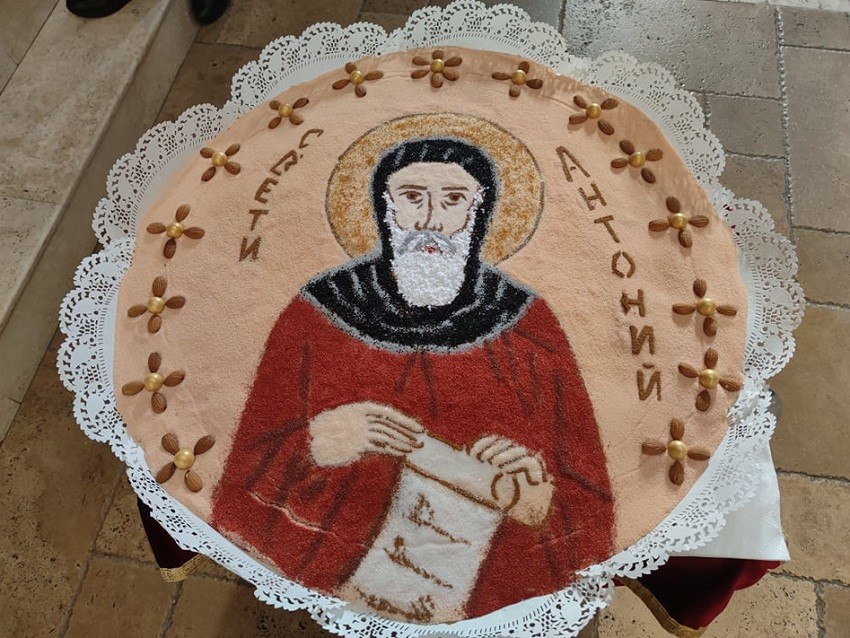The Orthodox tradition is to prepare ritual boiled wheat – kolivo, as offering on All Souls' Day.
Besides on All Souls' Day, kolivo is also prepared when a miraculous icon is brought to temples for veneration. The tradition rules that it is to be offered on Saturday – the day on which the dead are commemorated, unless it coincides with one of The Twelve Great Feasts of the Lord.
The tradition to commemorate the dead with kolivo (in Greek – kolliva) originates from the Greek Orthodox monasteries on Mount Athos, where the preparation and blessing of boiled wheat is a relatively common liturgical practice. With time it spread outside the monasteries, and in recent years kolivo has been invariably present in Bulgarian Orthodox churches.
"I brought this tradition of praising the saints and the Mother of God here, in Bulgaria, four years ago," says Nevena Spasova, church assistant at the Sofia Archdiocese. Since then I have taught many people how to prepare kolivo - for the glory of God and the joy of men. It is given away after the Holy Mass, and the feast becomes more complete. The wheat is symbolic of the Resurrection of Christ. Just as Christ rose from the dead, the grain of wheat that fell to the ground also sprouts to new life. With the wheat we show the Resurrection."

With kolivo the monks commemorate the Mother of God and the saints. At the monasteries on Mount Athos along with the carol for the saint, a separate small plate with a carol is prepared for the travelers. At its consecration, as a rule, the abbots of the respective monastery of the past 100 years are mentioned, as well as the priests and monks of the past three decades.
The traditional kolivo is made of cracked wheat. It is flavoured with raisins, walnuts, almonds, roasted hazelnuts, sesame seeds, pomegranates, cinnamon and cloves. It is then spread on a special tray and topped with sugar and decorated with the images of saints or of Virgin Mary. It takes talent and artistry to portray the face of a saint on boiled wheat.

"The way I do it, it takes two or three days to decorate it. The preparation is a long process - you need to prepare the different colours, the fruits, grind the nuts, boil the wheat and mix it with the other ingredients. Then the actual decoration and creating the image also takes a few hours."
In the monasteries there is a certain order and way of preparation, which the monks invariably follow. The images of the saints resemble Orthodox icons. In order to observe the canon while depicting them, in the post-Byzantine era, the painters created a special matrix called a "crib". It was used to define the outline of the icon on the cooked wheat, and then a fine brush was used to shape the details in different colours - the face, hair and clothes.

Prepared in this manner, the festive kolivo becomes a work of art.
"You need a blessing to paint kolivo - in monasteries you are given to do it by obedience. Me, personally, I was blessed by the late Grandfather Epiphanius. He was the chief cook on Mount Athos, and he was in charge of the meals of all the monasteries on Mount Athos.
It's hard, really, not everyone can do it, but I'm sure when this is the desire of one’s heart, God gives."
English version: Elizabeth Radkova
Photos: Darina GrigorovaOn 10 August 1915, the first Bulgarian-built aeroplane took to the skies for a test flight in Bozhurishte. It was designed by inventor Assen Yordanov, whose name still features in the textbooks used to train pilots and engineers today. From an early..
A trilingual exhibition titled “Egyptian Cults around the Black Sea” opens today at 6 PM at the Archaeological Museum in Sozopol , according to BNR – Burgas. Part of an international research project, the exhibition is organized by the Institute of..
The Bulgarian Orthodox Church has issued an official statement on “pagan neo-Hindu propaganda with pseudo-Christian elements”. The bishops of the Bulgarian Orthodox Church call for greater vigilance against “touring gurus, self-proclaimed “spiritual..

+359 2 9336 661
